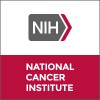
Chemotherapy and Rituximab With or Without Total-Body Irradiation and Peripheral Stem Cell Transplant...
LymphomaRATIONALE: Drugs used in chemotherapy use different ways to stop cancer cells from dividing so they stop growing or die. Monoclonal antibodies such as rituximab can locate cancer cells and either kill them or deliver cancer-killing substances to them without harming normal cells. Combining chemotherapy with monoclonal antibody therapy, total-body irradiation, and peripheral stem cell transplant may allow the doctor to give higher doses of chemotherapy drugs and kill more cancer cells. PURPOSE: This phase II trial is studying how well giving chemotherapy with rituximab followed by combination chemotherapy with or without rituximab, total-body irradiation, and peripheral stem cell transplant works in treating patients with lymphoma.

Motexafin Gadolinium and Doxorubicin in Treating Patients With Advanced Cancer
Breast CancerChronic Myeloproliferative Disorders11 moreRATIONALE: Drugs used in chemotherapy use different ways to stop tumor cells from dividing so they stop growing or die. Motexafin gadolinium may increase the effectiveness of doxorubicin by making tumor cells more sensitive to the drug. PURPOSE: Phase I trial to study the effectiveness of combining motexafin gadolinium with doxorubicin in treating patients who have recurrent or metastatic cancer.

Monoclonal Antibody Therapy in Treating Patients With Refractory Advanced Solid Tumors or Lymphoma...
LymphomaSmall Intestine Cancer2 moreRATIONALE: Monoclonal antibodies can locate cancer cells and either kill them or deliver cancer-killing substances to them without harming normal cells. PURPOSE: Phase I trial to study the effectiveness of monoclonal antibody therapy in treating patients who have refractory advanced solid tumors or lymphoma.

Melphalan, Fludarabine, and Alemtuzumab Followed by Peripheral Stem Cell Transplant in Treating...
LeukemiaLymphoma3 moreRATIONALE: Giving low doses of chemotherapy, such as melphalan and fludarabine, and a monoclonal antibody, such as alemtuzumab, before a donor bone marrow or peripheral blood stem cell transplant helps stop the growth of cancer cells. It also stops the patient's immune system from rejecting the donor's stem cells. The donated stem cells may replace the patient's immune system and help destroy any remaining cancer cells (graft-versus-tumor effect). Sometimes the transplanted cells from a donor can also make an immune response against the body's normal cells. Giving cyclosporine after the transplant may stop this from happening. PURPOSE: This phase II trial is studying how well fludarabine, melphalan, alemtuzumab, and peripheral stem cell transplant work in treating patients with hematologic cancer.

ZD0473 and Doxorubicin in Treating Patients With Advanced Solid Tumors or Lymphoma
LymphomaSmall Intestine Cancer2 moreRATIONALE: Drugs used in chemotherapy use different ways to stop tumor cells from dividing so they stop growing or die. Combining more than one drug may kill more cancer cells. PURPOSE: Phase I trial to study the effectiveness of combining ZD0473 and doxorubicin in treating patients who have advanced solid tumors or lymphoma.

Pilot Study of Non-Myeloablative, HLA-Matched Allogeneic Stem Cell Transplantation for Pediatric...
Hodgkin LymphomaLymphocytic Leukemia7 moreBackground: Allogeneic blood and marrow stem cell transplantation (BMT) plays an important role in the curative treatment of a number of pediatric malignancies. Unfortunately, the success of conventional allogeneic BMT is limited in part by the multiple toxicities associated with myeloablative preparative regimens. Non-myeloablative pre-transplant regimens are associated with less toxic side effects than standard BMT. Recently, a novel immunosuppressive, non-myeloablative pre-transplant chemotherapy regimen has been shown to facilitate complete donor engraftment in an adult trial at the NCI. Objectives: The primary objective of this protocol is to evaluate the efficacy and safety of this treatment approach in pediatric patients with hematopoietic malignancies Eligibility: Inclusion Criteria Age: Patient must be greater than or equal to 5 years and less than 22 years of age. Diagnosis: Hodgkin s and Non-Hodgkin s Lymphoma: Refractory disease or relapse after salvage regimen. Acute Myelogenous Leukemia: History of bone marrow relapse in remission (CR) #2 or greater. Acute Lymphocytic Leukemia: History of bone marrow relapse in CR #2 or greater (CR#1 with Philadelphia chromosome positive or prior induction failure). Acute Hybrid Leukemia including mixed lineage, biphenotypic and undifferentiated: History of bone marrow relapse in CR #2 or greater (CR#1 with Philadelphia chromosome positive or prior induction failure). Myelodysplastic Syndrome: RAEB or RAEB-t with less than 10% blasts in marrow and blood. Chronic Myelogenous Leukemia: Chronic phase or accelerated phase with less than 10% blasts in marrow and blood. Juvenile Myelomonocytic Leukemia: less than 10% blasts in marrow and blood. Prior Therapy: Chemotherapy to achieve above criteria allowed. Prior BMT allowed as long as at least day 100+ post-prior BMT, no evidence of GVHD, and no detectable residual donor chimerism. Donor: First degree related donors, who are HLA matched (single HLA-A or B locus mismatch allowed), weight greater than or equal to 15 kilograms, and who meet standard donation criteria will be considered. The same donor from a prior BMT is allowed. ECOG Performance Status: 0, 1, or 2. and life expectancy: greater than 3 months. Liver Function: Serum direct bilirubin less than 2.0 mg/dL and serum ALT and AST values less than or equal to 2.5x upper limit of normal. (Values above these levels may be accepted if due to malignancy.) Renal Function: Age adjusted normal serum creatinine or Cr clearance greater than or equal to 60 mL/min/1.73 m(2). Pulmonary Function: DLCO greater than or equal to 50%. Cardiac Function: LVEF greater than or equal to 45% by MUGA or LVSF greater than or equal to 28% by ECHO Exclusion Criteria Active CNS malignancy: Tumor mass on CT or leptomeningeal disease. (Patients with a history of CNS involvement and no current evidence of CNS disease are allowed.) HIV infection, active hepatitis B or C infection: HbSAg or HCV seropositive and elevated liver transaminases. Fanconi Anemia. Lactating or pregnant females. Design: Pilot Study Initial evaluation: Patient and donor will be screened for eligibility. G-CSF primed bone marrow derived stem cells will be collected from the donor. Induction/Consolidation chemotherapy: 1 to 3 cycles will be given every 22 days depending on disease response, CD4 count, and toxicities. Lymphoma: fludarabine, etoposide, doxorubicin, vincristine, cyclophohamide, prednisone, and filgrastim (EPOCH-fludarabine). Leukemia and MDS: Fludarabine, cytarabine, and filgrastim (FLAG). Transplantation: Fludarabine and cyclophosphamide will be administered over 4 days followed by bone marrow transplant. Patients will remain hospitalized until bone marrow recovery. Patients will be monitored closely at the NIH for at least 100 days post-BMT. Post-transplant CNS prophylaxis for ALL: Standard post-transplant CNS prophylaxis will be employed with intrathecal methotrexate to decrease the risk of CNS relapse for all patients with ALL. Total number of recipient and donors to be accrued is 56.

Combination Chemotherapy Plus Rituximab in Treating Patients With Recurrent or Refractory Non-Hodgkin's...
LymphomaRATIONALE: Drugs used in chemotherapy use different ways to stop cancer cells from dividing so they stop growing or die. Monoclonal antibodies such as rituximab can locate cancer cells and either kill them or deliver cancer-killing substances to them without harming normal cells. PURPOSE: Phase II trial to study the effectiveness of combination chemotherapy combined with rituximab in treating patients who have recurrent or refractory non-Hodgkin's lymphoma.

Radiolabeled Monoclonal Antibody in Treating Patients With Previously Treated Large Cell Lymphoma...
LymphomaRATIONALE: Radiolabeled monoclonal antibodies can locate tumor cells and deliver tumor-killing substances such as radioactive iodine to them without harming normal cells. PURPOSE: Phase I trial to study the effectiveness of radiolabeled monoclonal antibodies in treating patients who have large cell lymphoma that has been previously treated.

Cyclophosphamide W/or W/Out Rituximab and Peripheral Stem Cell Transplantation in Patients With...
LymphomaRATIONALE: Monoclonal antibodies such as rituximab can locate cancer cells and either kill them or deliver cancer-killing substances to them without harming normal cells. Drugs used in chemotherapy use different ways to stop cancer cells from dividing so they stop growing or die. Combining chemotherapy with peripheral stem cell transplantation may allow the doctor to give higher doses of chemotherapy drugs and kill more cancer cells. It is not yet known if combining rituximab with cyclophosphamide is more effective than cyclophosphamide alone in stimulating peripheral stem cells for transplantation. PURPOSE: This randomized phase II trial is studying how well giving cyclophosphamide with or without rituximab followed by chemotherapy and peripheral stem cell transplantation works in treating patients with recurrent non-Hodgkin's lymphoma.

Total-Body Irradiation and Chemotherapy Followed By Donor Bone Marrow Transplant in Treating Young...
LeukemiaLymphoma2 moreRATIONALE: Giving chemotherapy and total body irradiation before a donor bone marrow transplant helps stop the growth of cancer and abnormal cells and helps stop the patient's immune system from rejecting the donor's stem cells. When the healthy stem cells from a donor are infused into the patient they may help the patient's bone marrow make stem cells, red blood cells, white blood cells, and platelets. Sometimes the transplanted cells from a donor can make an immune response against the body's normal cells. Giving antithymocyte globulin and removing the T cells from the donor cells before transplant may stop this from happening. PURPOSE: This phase II trial is studying how well total-body irradiation and chemotherapy followed by T-cell depleted donor bone marrow transplant works in treating young patients with hematologic cancer.
